popularly known as
Saint John Lateran
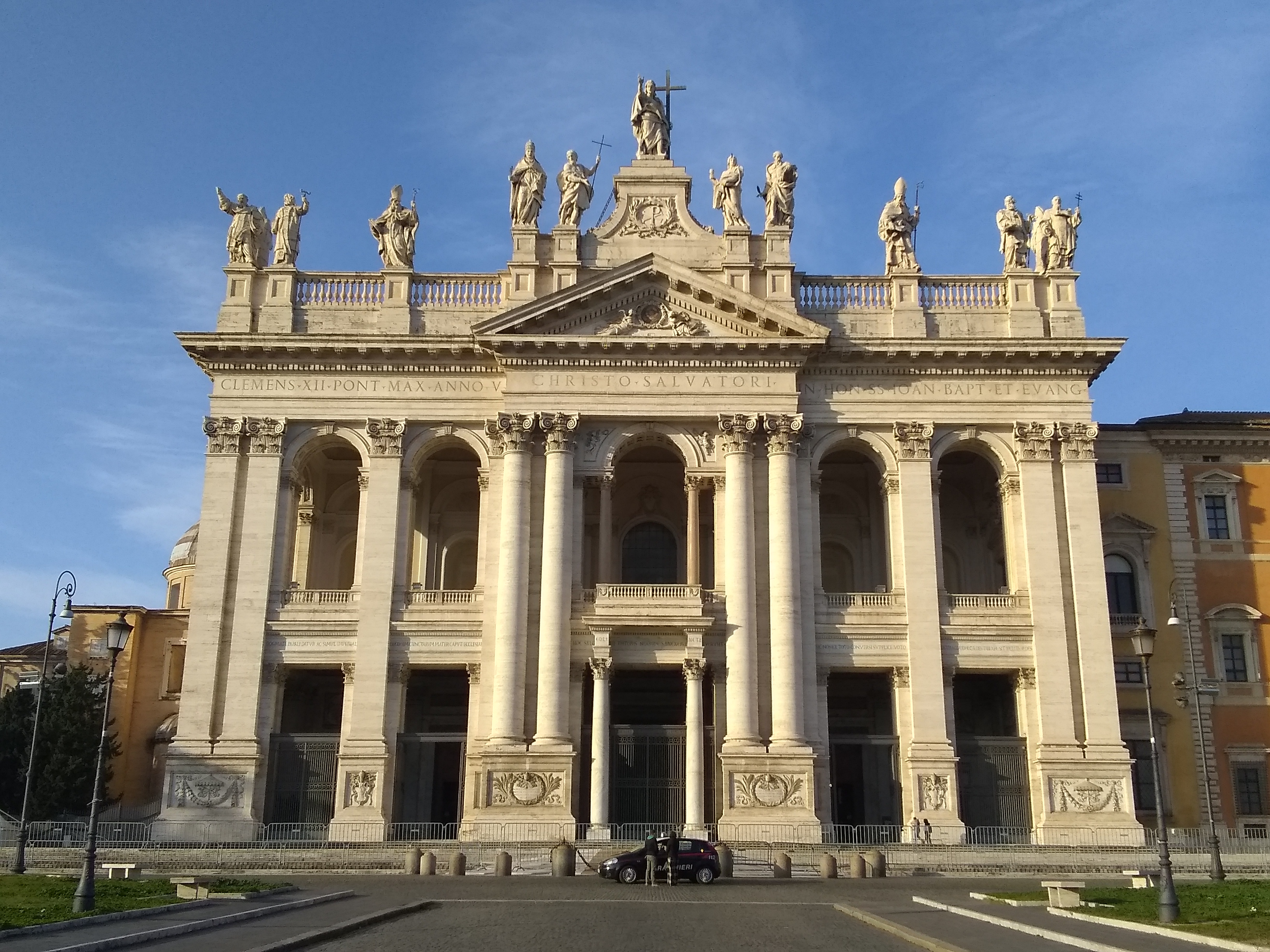
by Br. Alexis Bugnolo
Last Friday, I had the grace to make a pilgrimage to the Arch-Basilica of the Most Holy Savior, popularly known as Saint John Lateran, the Cathedral Church of the Diocese of Rome.
It is called an Arch-Basilica, because of all the Churches in the world it is the Chief and Head and Most important, being the very Cathedral of the Vicar of Jesus Christ. It is called a Basilica, from the Greek word for royal, because it was placed under the protection of the Roman Emperor, Constantine, during whose reign it was built. So important was this Church in the history of Christianity, that all the Churches in the world, named “Christ Church” bear a name which traces originally back to this structure.
The land on which the Basilica was built was originally a Fort of the Imperial Cavalry bodyguards, and then passed to the Laterani family. It came into the possession of the Roman Emperor Constantine through his marriage to Fausta, the daughter of Maxentius.
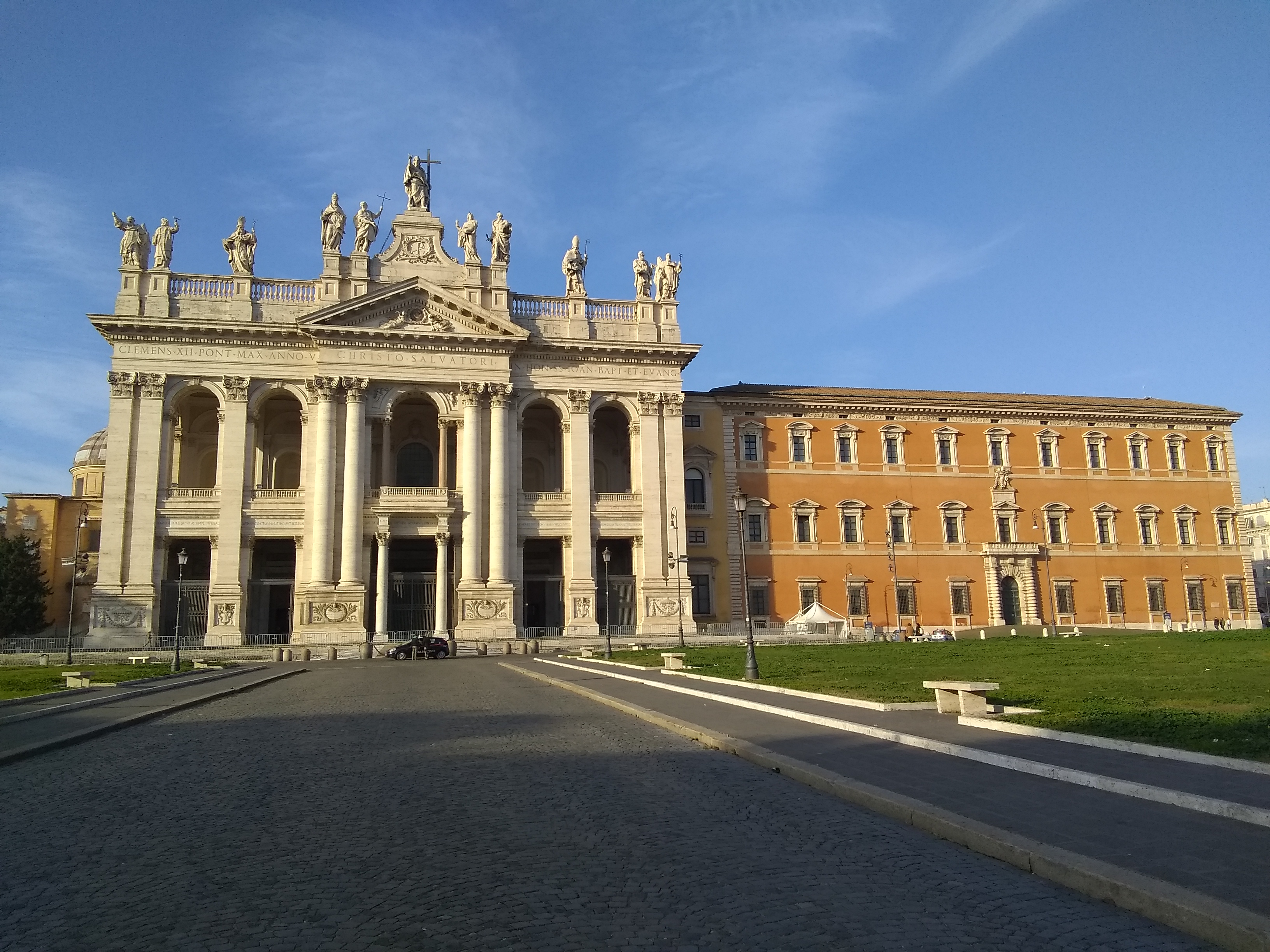 After his victory at the Milvian Bridge, Constantine donated it to Pope Militiades sometime before or during 313 A.D. At that time, there was a palace on the site, which had belonged to Fausta. It was converted into a Catholic Church.
After his victory at the Milvian Bridge, Constantine donated it to Pope Militiades sometime before or during 313 A.D. At that time, there was a palace on the site, which had belonged to Fausta. It was converted into a Catholic Church.
The Basilica was consecrated in 324 by Pope Sylvester I, who made the adjacent palace his personal residence. Here the popes resided for centuries. It was here Saint Francis met Pope Innocent III and received verbal approval for his first Rule. Even, to this day, alongside the Basilica one finds the Curia, or Chancery, of the Diocese of Rome, as one can see in this photo to the right.
In the 10th Century, the Basilica was rededicated to Saint John the Baptist, by Pope Sergius III. Saint John was the archetype of all Christian holiness (cf. Luke 7:28) and especially of hermits and prophets. So a great number of Churches were dedicated to him throughout Christianity.
In the 12th Century, Pope Lucius II rededicated the Basilica to Saint John the Apostle, taking into account the growing understanding of the holiness of this Saint and protector of the Blessed Virgin. Today, the Arch-Basilica bears the full name: Arch-Basilica of the Most Holy Savior and of Saints John the Baptist and John the Evangelist at the Lateran.
The facade, or front, of the Arch-Basilica is an imposing structure. On Top, at the Center, there is a wonderful statue of Jesus Christ holding His Cross. On each side are statues of great Popes and Saints.
As you can see, the front of the Church has pillars which support a large upper balcony. This is called the Loggia of the Basilica. Both Saint Mary Major’s and St. Peter’s also have loggias. When a new Pope is elected, he normally greets the faithful from the Loggia of St. Peter’s and from the loggias of the other Basilicas during his first visits.
 Basilicas according to Church law are directly subject to the Roman Pontiff, being considered as churches belonging to the Diocese of Rome. The symbol for a Basilica, therefore, is the Papal Umbrellino and Keys, as you can see in this bass-relief at the base of one of the pillars of the facade of the Arch-Basilica.
Basilicas according to Church law are directly subject to the Roman Pontiff, being considered as churches belonging to the Diocese of Rome. The symbol for a Basilica, therefore, is the Papal Umbrellino and Keys, as you can see in this bass-relief at the base of one of the pillars of the facade of the Arch-Basilica.
The wreath strewn below the keys is a traditional symbol of honor and dignity, being a depiction of a wreath made of laurel leaves as used by the ancient Romans for festive occasions.
The Lateran Palace, immediately adjacent to the Basilica was the residence of the Popes from 313 to 1309, or approximately the 1000 year reign spoken of by Saint John in the Apocalypse. A fire damaged the site in 1307 and 1361. Pope Clement V, who was a Frenchman, moved his official residence to Avignon in 1309, which began the long Avignese Capitvity, against which Saint Catherine of Sienna railed during her lifetime: the idea that the Bishop of Rome should be residing hundreds of miles away in France was a scandal to Christendom, and represented the extreme dissonance of the medieval notion of princely power, able to do what it liked, with that of the spiritual authority of the Pope.
The second fire so damaged the Basilica and residence, that when the Popes returned to Rome, they never again resided at the Lateran.
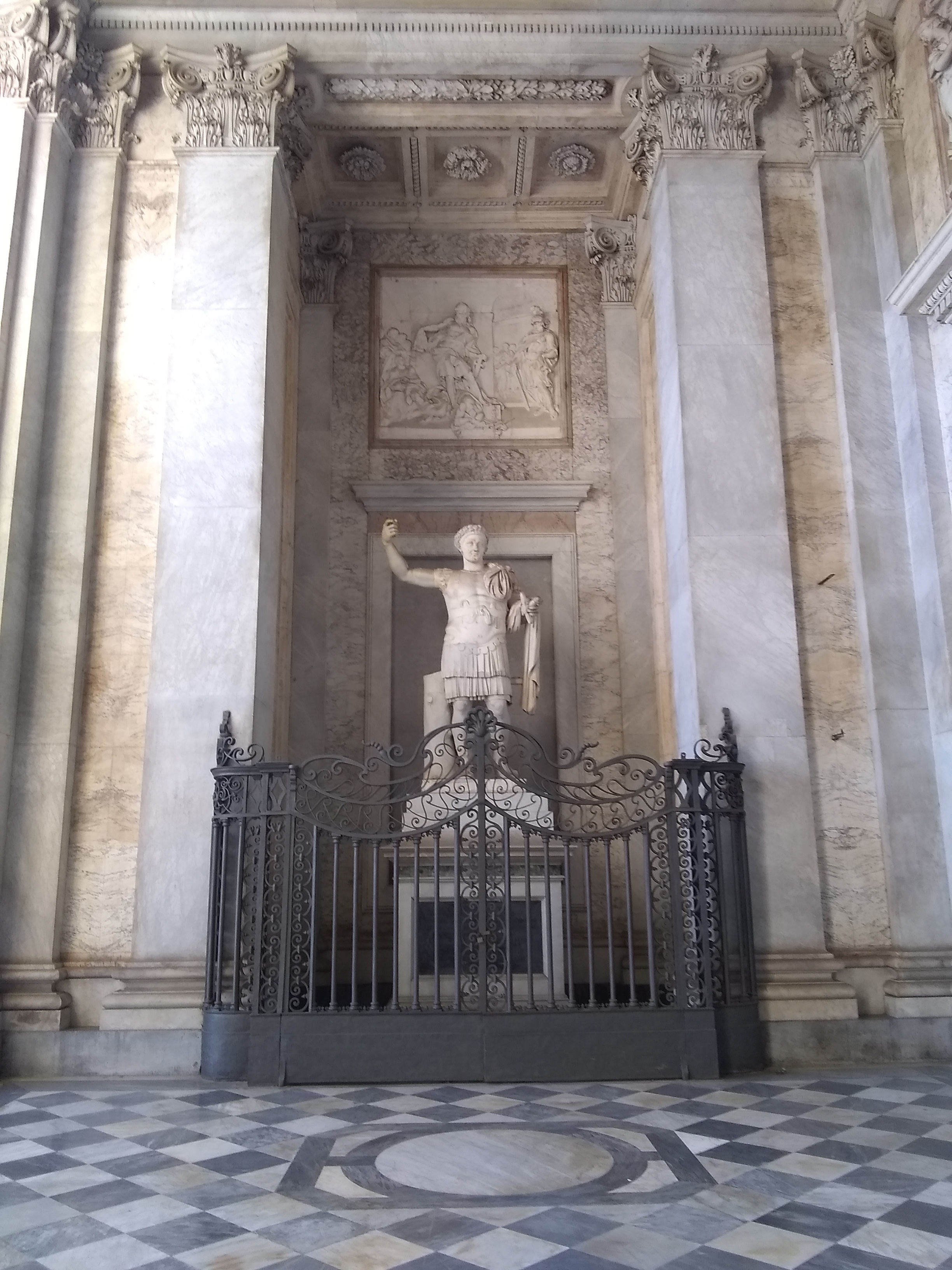 As you enter the Portico of the Facade of the Arch-Basilica, if you look to the left, you can see the Statue of Constantine, the founder of the Church, on account of his donation of the land. He is depicted in imperial style in a manner aping the pose of the first imperator, Augustus Octavian.
As you enter the Portico of the Facade of the Arch-Basilica, if you look to the left, you can see the Statue of Constantine, the founder of the Church, on account of his donation of the land. He is depicted in imperial style in a manner aping the pose of the first imperator, Augustus Octavian.
The Portico is decorated with elaborate marble flooring and beautiful friezes and imagery. The only ghastly ugliness is the Holy Door which is closed except for the Holy Years. It is made of case bronze by some wicked and demented artist, and was so ugly, I decided not to photograph it.
This reminds us, that Roman Basilicas are like history books, they record the events in the life or death of the Church down through the ages. The Arch-Basilica is no different, as it contains within numerous funerary monuments to Cardinals and Noblemen who greatly assisted the Church of Rome in their ages, and whose dying wish was to be buried or remembered in the Cathedral of the Eternal City.
As you can see, the Arch-Basilica is not as large as the Basilica of Saint Paul’s Outside the Walls, which I showed you two weeks ago, but it is stupendous in its own way. The floors are covered with inlaid marble of many colors, in the style popular in the late Middle Ages. The pillars on each side of the Nave each feature an enormous statue of one of the 12 Apostles, in imitation to the decorative style at the Vatican Basilica of Saint Peter’s.
The Ceiling is magnificently ornamented, as you can see in these two photos:
And, here:
The center piece, of course, is the High Altar, which appears to have escaped the desecrations of the Aggiornamento, for the most part (ironic, since after the Council the Bishops of Rome allowed the desecration of altars throughout the world, but protected that of their own Cathedral).
In the above photo, one is looking directly at the side altar of the Most Blessed Sacrament in the distant background. In the foreground, to the left, is the High Altar, which free stands at the head of the Nave of the Church.
In the photo above, a close up of the high altar of the Archbasilica. Medieval high altars often had canopies built over them, to prevent birds from leaving dirt upon the altar, if they happened to enter the Church when the doors were open.
In this photo, seen above, you can see the entire Canopy above the High Altar. Throughout the ages, various legends arose about why this canopy was so large. On my first visit to Rome in 2004, I was told by a guide that the relics of Saints John the Baptist and John the Apostle were kept above the altar, to protect them from the medieval devotion called, “relic theft”. In the middle ages, the Canons of this Basilica often claimed that the Ark of the Covenant was kept at the High Altar. This was not true, however.
Of all the funerary monuments in the Arch-Basilica, the most famous of them all is found to the left of the High Altar, on the back wall of the Church. It depicts Pope Leo XIII in all the vigor and triumph of his spirit.
Here is a close up of the statue of this great Pope.
This, without a doubt, is what a pope should look like and dress like.
Unlike Saint Paul’s Outside the Walls or Saint Peter’s Basilicae, this Arch-Basilica puts on display no great relic of any Saint. A pilgrim can obtain a plenary indulgence by visiting, and the mere opportunity to stand at the center of the Catholic Church, as one does, in this Church, is a worthy enough pilgrim’s goal.
May we all never forget and every foster a deep and profound sense of gratitude and reverence for the One Holy Catholic and Apostolic Church. And may we dedicate our lives, fame and fortunes to ever defend Her from all enemies, both outside and within, so long as we live.

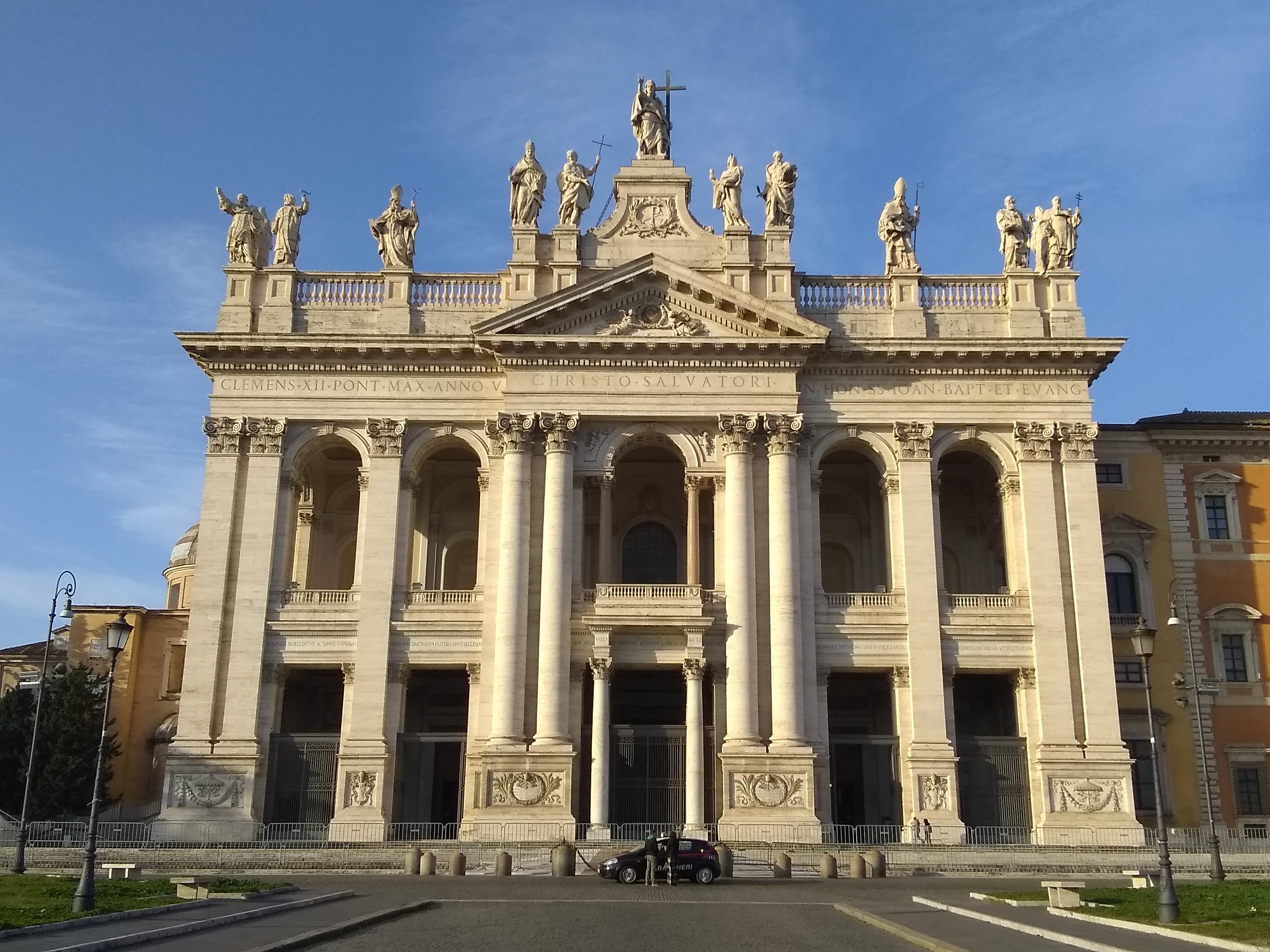

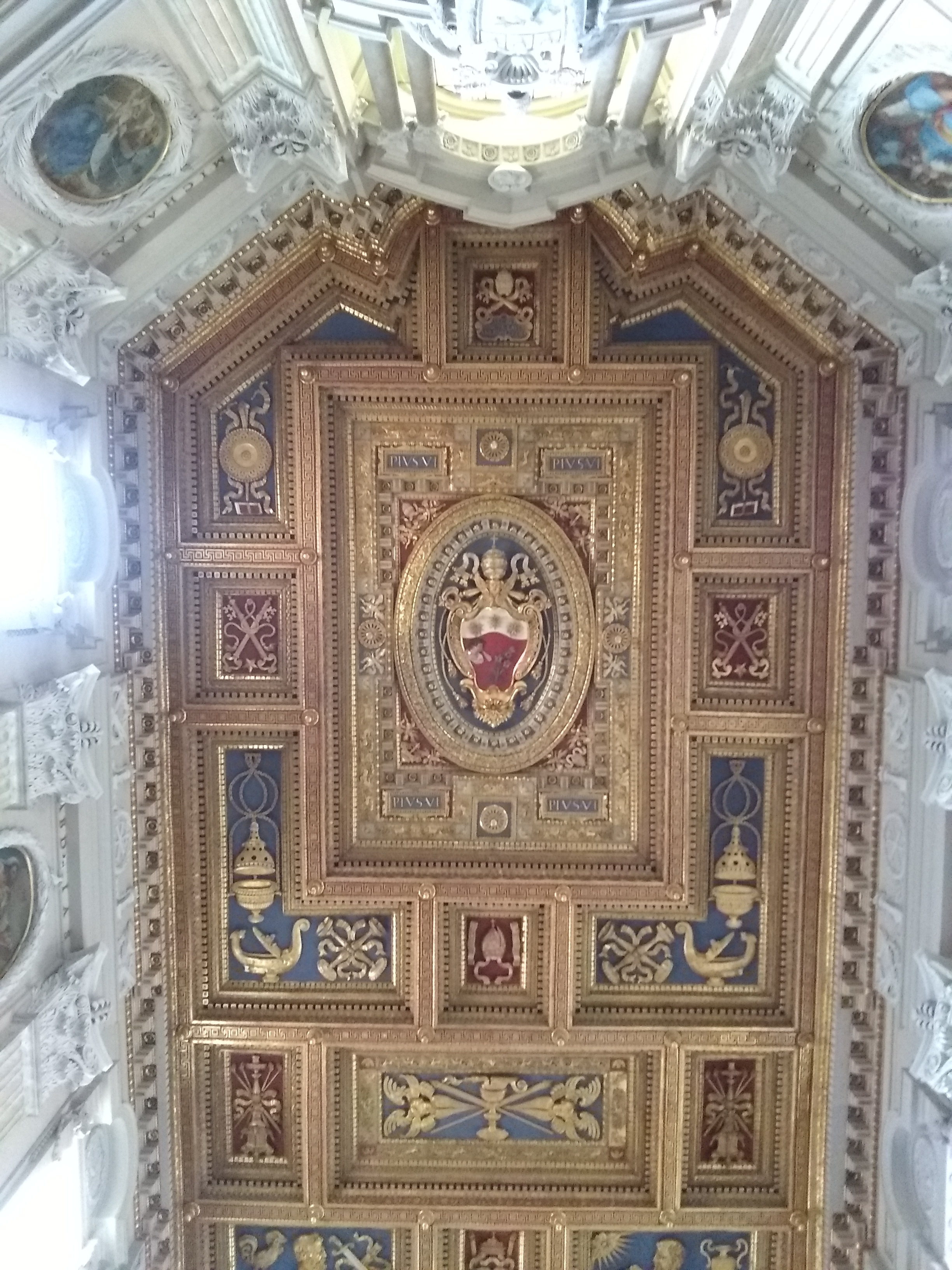
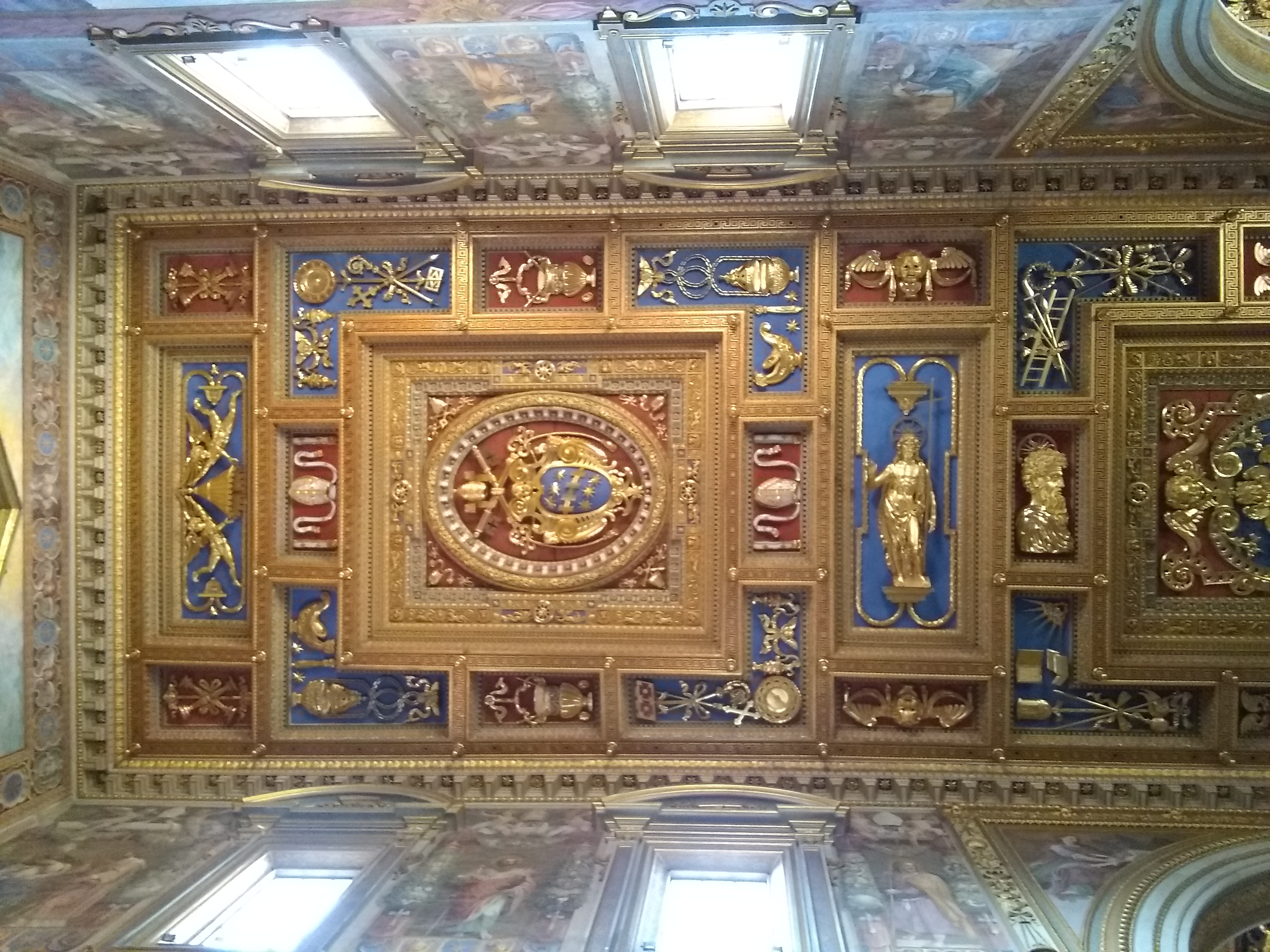


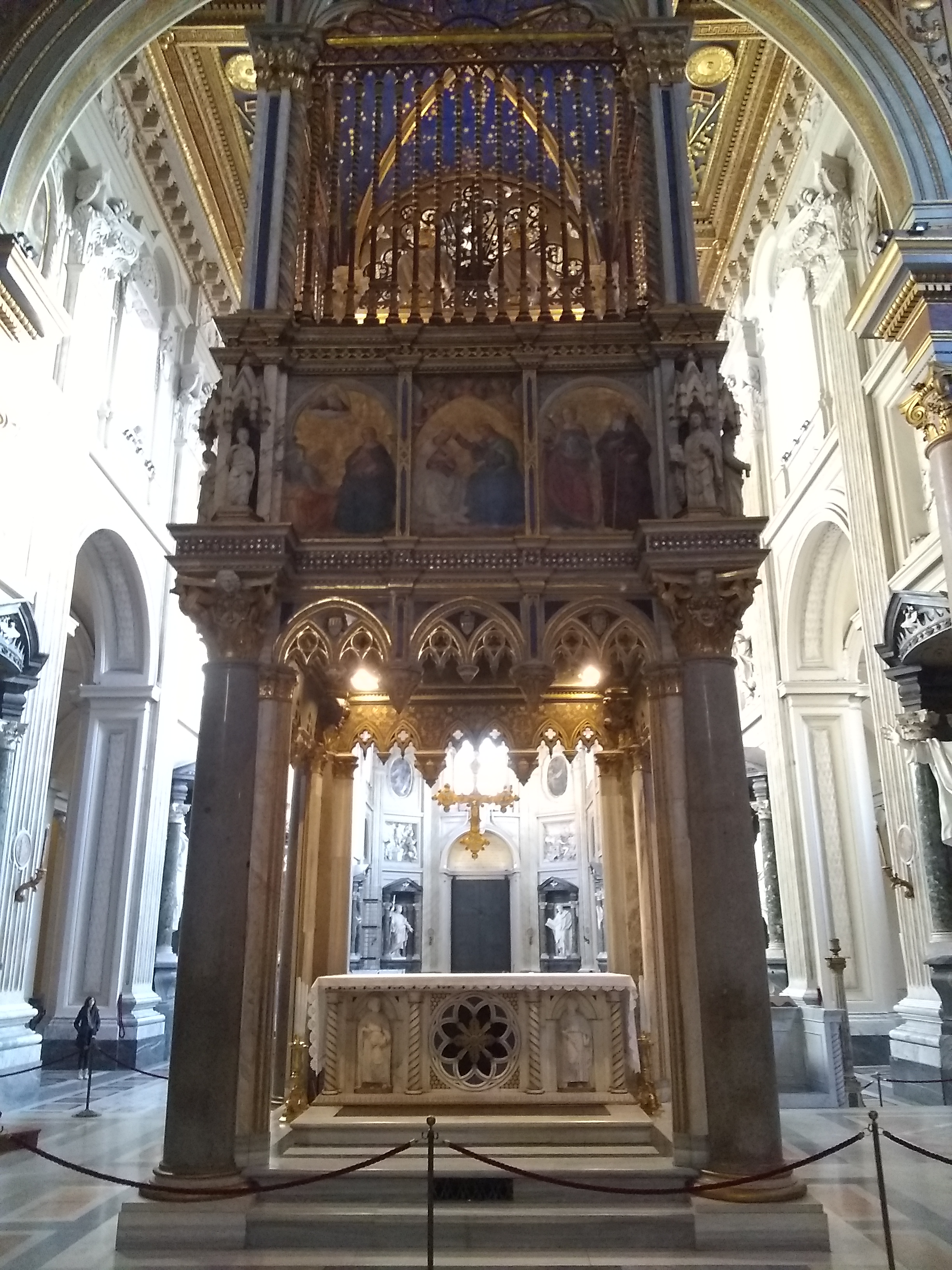
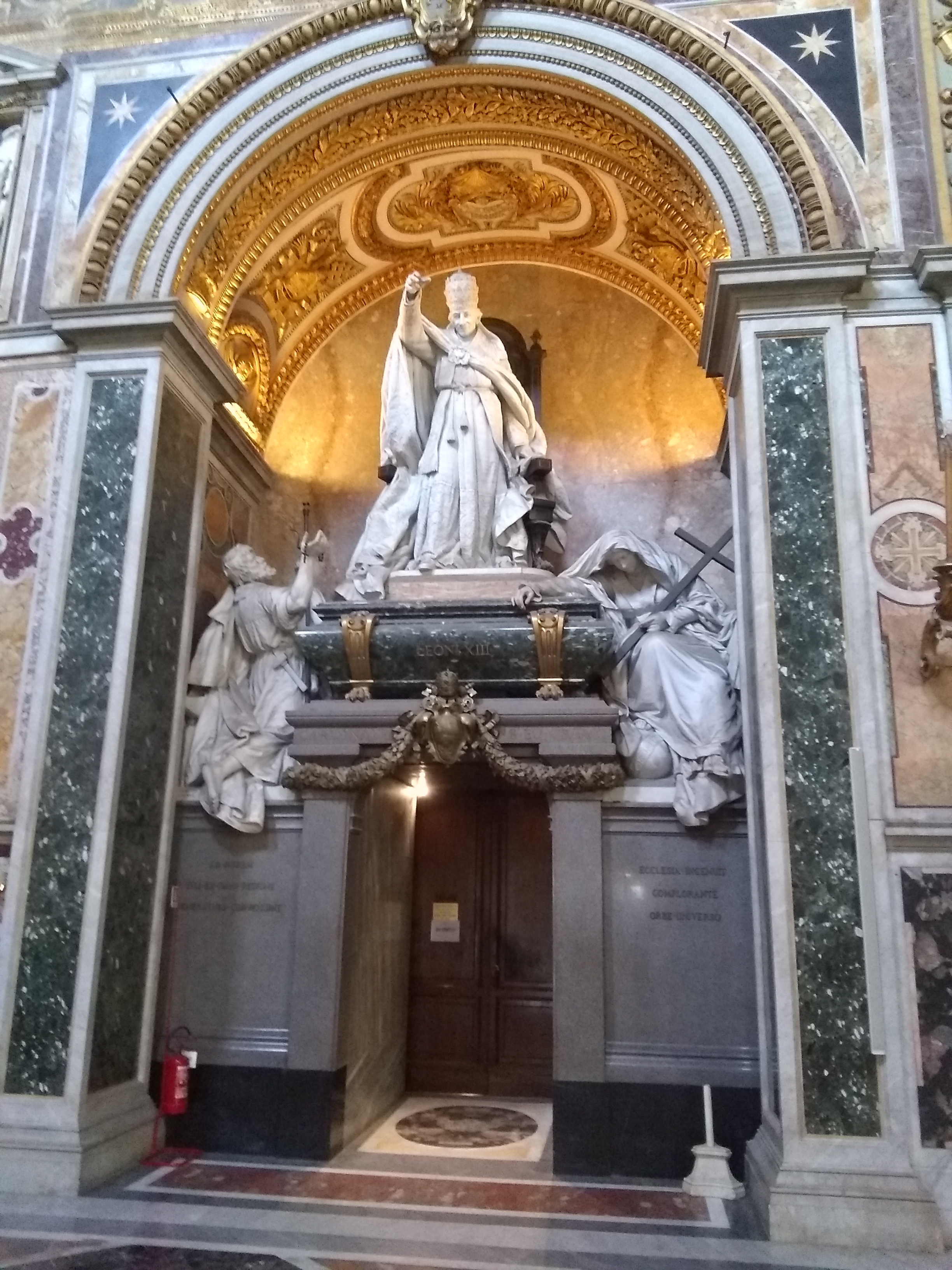
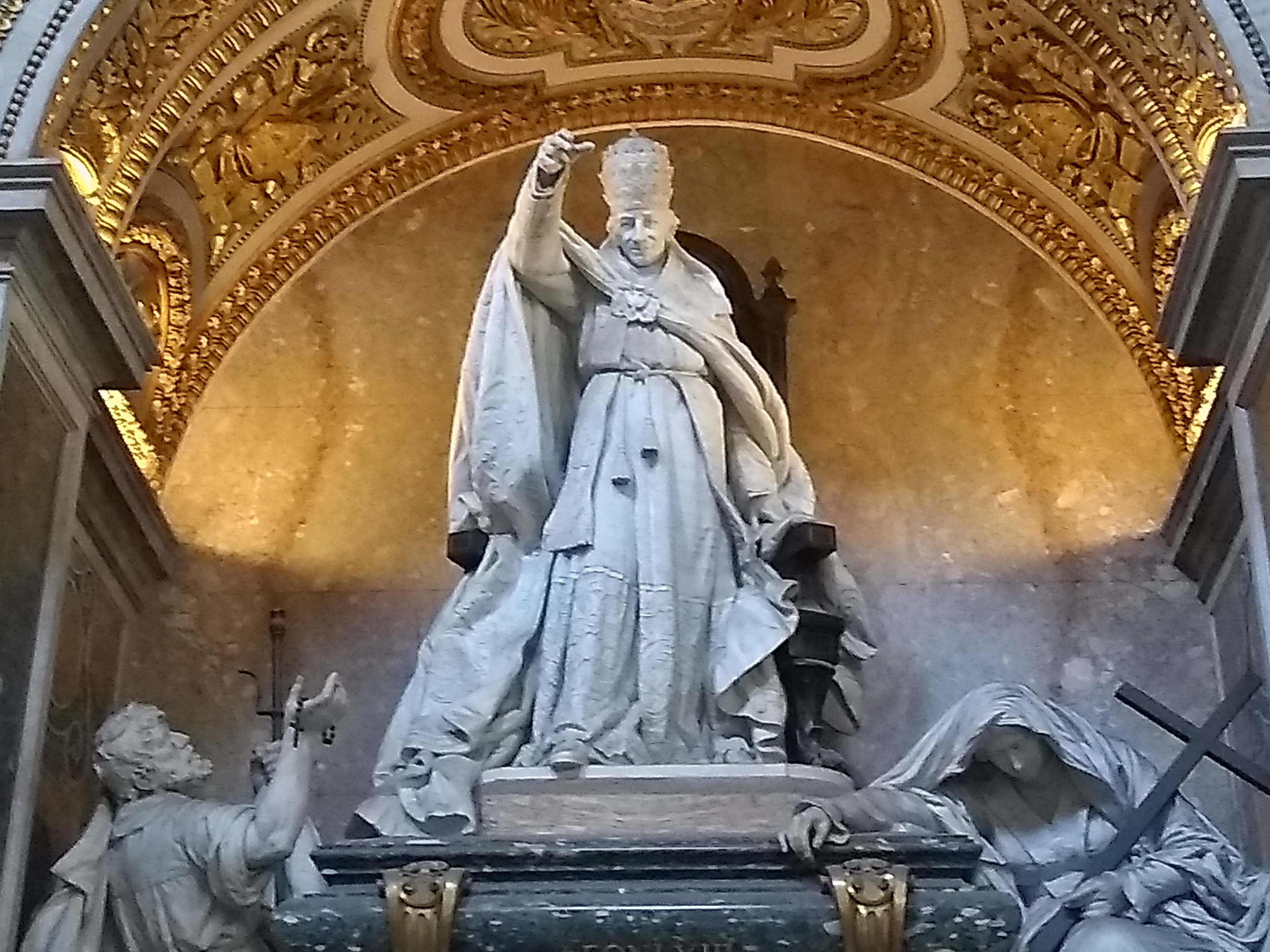
Thanks for showing us, Brother, the magnificence of our past and the implied desecration of our present. It is a beckoning call and a reminder of why we continue to soldier on.
I look forward to your “virtual” tours, Br. Bugnolo. Thank you.